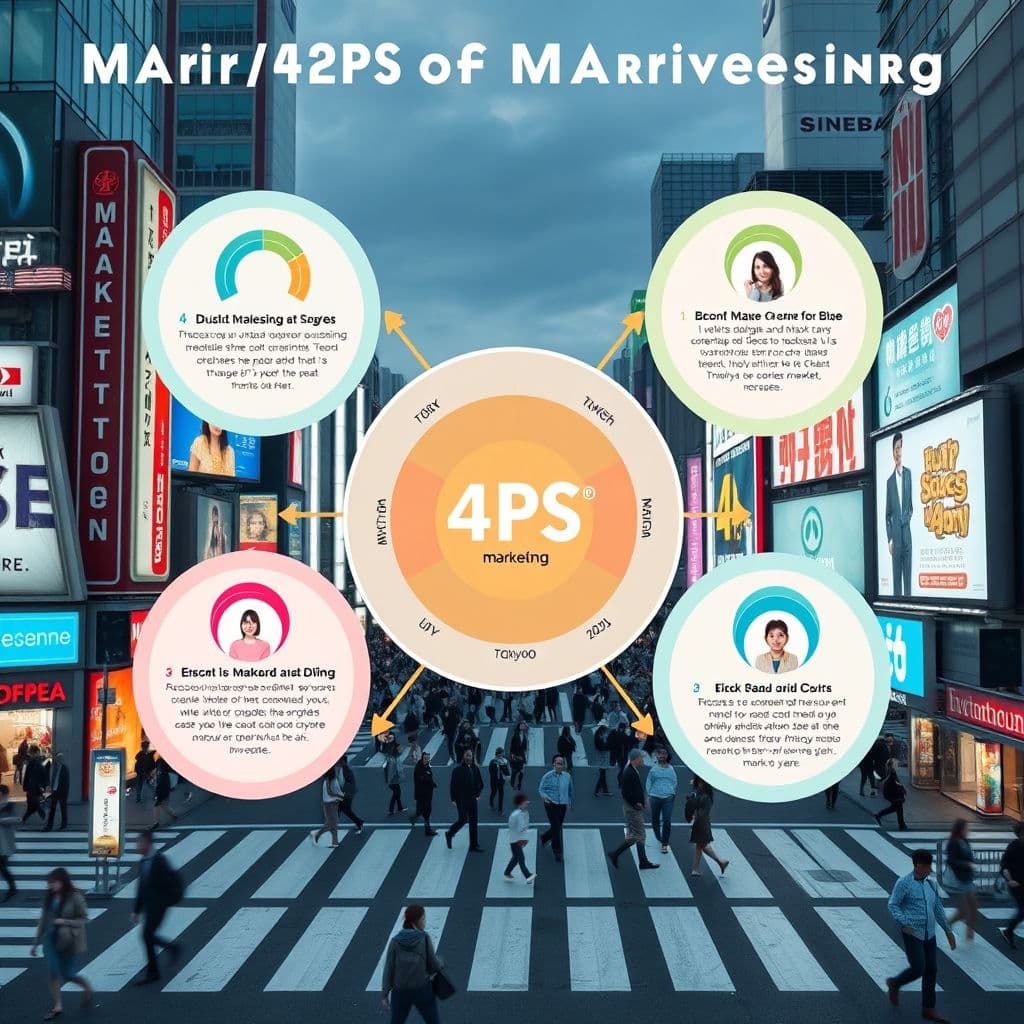Corporate Marketing Mastery: Your Complete Guide to Enterprise-Level Marketing Success

In today's competitive business landscape, corporate marketing mastery isn't just an advantage—it's essential for survival and growth. Whether you're an aspiring marketing professional, a business owner looking to elevate your brand, or a seasoned marketer seeking to refine your corporate approach, this comprehensive guide will take you through the seven critical steps to achieving marketing excellence at the enterprise level. Corporate marketing goes far beyond traditional advertising; it's about creating a cohesive brand experience that resonates with stakeholders, drives business objectives, and builds lasting relationships. Let's embark on this journey to transform your understanding and application of corporate marketing principles. View original learning path
Step 1: Understand the Basics of Marketing
Before diving into corporate marketing complexities, you must master the fundamental principles that form the foundation of all marketing activities. Marketing, at its core, is the process of creating, communicating, and delivering value to customers while managing customer relationships in ways that benefit the organization. The Marketing Mix, commonly known as the 4Ps—Product, Price, Place, and Promotion—provides a framework for making strategic decisions. Market Segmentation involves dividing your broader market into distinct groups with similar characteristics, needs, or behaviors. Understanding your Target Audience means identifying the specific group of consumers most likely to purchase your product or service. Marketing Research is the systematic collection and analysis of data about your market, competition, and customers. These concepts work together to create a solid marketing foundation. Practice by analyzing successful brands: examine how Apple segments its market, how Nike positions its products, or how Amazon optimizes its pricing strategies.

Step 2: Learn about Corporate Marketing
Corporate Marketing elevates traditional marketing by focusing on the organization as a whole, rather than individual products or services. It encompasses Corporate Branding, which involves establishing a distinctive identity that reflects your company's values, mission, and personality across all touchpoints. Corporate Identity goes beyond visual elements like logos and colors—it's the complete personality of your organization expressed through communication style, values, and behavior. Corporate Communication ensures consistent messaging across all channels and stakeholders, from employees and customers to investors and media. Corporate Reputation Management involves actively monitoring, influencing, and maintaining public perception of your organization. The key difference from product marketing is the long-term, holistic approach that builds organizational equity rather than just driving immediate sales. Study companies like IBM, which successfully transformed from a hardware company to a services and cloud computing leader through strategic corporate marketing initiatives.
Step 3: Study Marketing Strategies
Marketing Strategy is your long-term game plan for reaching prospective customers and turning them into loyal advocates. Market Positioning defines how you want your brand to be perceived in the minds of your target audience relative to competitors. Competitive Analysis involves systematically evaluating your competitors' strengths, weaknesses, strategies, and market positioning to identify opportunities and threats. SWOT Analysis—examining Strengths, Weaknesses, Opportunities, and Threats—provides a comprehensive view of your strategic position. Marketing Channels are the pathways through which you deliver your message and products to customers. Effective strategy development requires understanding that these elements must work in harmony. For example, if you position yourself as a premium brand, your channels and communication must reflect that positioning consistently. Practice by creating positioning statements for different scenarios, conducting competitive analyses of companies in your industry, and identifying the most effective channels for reaching your target audience.

Step 4: Understand Digital Marketing
Digital Marketing has revolutionized how corporations reach and engage with their audiences. It encompasses all marketing efforts that use electronic devices or the internet, leveraging digital channels to connect with customers where they spend their time online. Search Engine Optimization (SEO) involves optimizing your online content to rank higher in search engine results, driving organic traffic to your website. Social Media Marketing utilizes platforms like LinkedIn, Twitter, and Facebook to build brand awareness, engage with audiences, and drive business results. Content Marketing focuses on creating and distributing valuable, relevant content to attract and retain a clearly defined audience. Email Marketing remains one of the highest ROI digital tactics, allowing personalized communication at scale. The key to digital marketing success is integration—your SEO strategy should support your content marketing, which should align with your social media efforts and email campaigns. Start by auditing your current digital presence, identifying gaps, and developing an integrated approach that supports your overall corporate marketing objectives.
Step 5: Gain Knowledge in Marketing Analytics
Marketing Analytics transforms raw data into actionable insights that drive strategic decisions and improve marketing performance. It involves the systematic collection, measurement, analysis, and interpretation of marketing data to understand and optimize marketing effectiveness. Data Collection and Analysis require establishing robust systems for gathering relevant information from various sources—website analytics, social media metrics, sales data, and customer feedback. Key Performance Indicators (KPIs) are the specific metrics that matter most to your business objectives, such as customer acquisition cost, lifetime value, or conversion rates. Marketing Metrics encompass a broader range of measurements including brand awareness, engagement rates, and market share. Marketing Dashboards visualize this data in real-time, making it accessible and actionable for decision-makers. The key is selecting the right metrics that align with your strategic goals and creating systems that provide timely, accurate insights. Begin by identifying your most important business outcomes, then work backward to determine which metrics best predict and measure progress toward those outcomes.
Step 6: Develop Marketing Campaigns
Campaign Planning is where strategy meets execution, requiring meticulous attention to detail and creative thinking. Setting Objectives and Goals provides clear direction and measurable outcomes—whether you're aiming to increase brand awareness, generate leads, or drive sales. Creating Marketing Messages involves developing compelling, consistent communication that resonates with your target audience and supports your brand positioning. Selecting Marketing Channels requires matching your message to the most effective platforms and touchpoints for reaching your audience. Measuring Campaign Performance closes the loop, providing insights for optimization and future planning. Successful campaigns integrate multiple elements seamlessly—your message should be consistent across all channels while being optimized for each platform's unique characteristics. Consider how campaigns like Nike's 'Just Do It' or Apple's product launches demonstrate integrated messaging across digital, traditional, and experiential channels. Practice by developing campaign briefs for different objectives, creating multi-channel deployment plans, and establishing measurement frameworks before launch.

Step 7: Master Relationship Marketing
Relationship Marketing represents the evolution from transactional to relationship-focused marketing, emphasizing long-term customer value over short-term sales. It's built on the understanding that acquiring new customers costs significantly more than retaining existing ones. Customer Relationship Management (CRM) systems and strategies help you track, manage, and optimize every customer interaction throughout their lifecycle. Customer Segmentation in relationship marketing goes deeper than basic demographics, focusing on behavioral patterns, preferences, and value potential. Customer Loyalty Programs create structured approaches to reward and retain your best customers while encouraging desired behaviors. Personalization and Customization use data insights to deliver tailored experiences that make each customer feel valued and understood. The most successful relationship marketing strategies create emotional connections that transcend price competition. Study how companies like Amazon use purchase history and browsing behavior to create personalized experiences, or how Starbucks built a loyalty ecosystem that drives both frequency and spend. Focus on developing systems that capture customer insights and translate them into meaningful, personalized interactions.
Conclusion
Corporate Marketing Mastery is a journey that combines strategic thinking, creative execution, and data-driven decision making. By progressing through these seven steps—from understanding marketing fundamentals to mastering relationship marketing—you're building a comprehensive skill set that will serve you throughout your career. Remember that mastery comes through consistent practice and continuous learning. The marketing landscape evolves rapidly, with new technologies, channels, and consumer behaviors emerging regularly. The foundation you've built through this guide will help you adapt and thrive in this dynamic environment. Start implementing these concepts immediately: audit your current marketing approach, identify areas for improvement, and begin applying these frameworks to real-world challenges. Your journey to corporate marketing mastery begins with the first step you take today.
Frequently Asked Questions
- How long does it take to master corporate marketing?
- Corporate marketing mastery is an ongoing journey that typically requires 2-3 years of focused learning and practice. However, you can start seeing improvements in your marketing effectiveness within weeks of applying these fundamental concepts. The key is consistent practice and staying current with industry trends and technologies.
- What are common mistakes beginners make in corporate marketing?
- Common mistakes include focusing too heavily on tactics without strategy, inconsistent messaging across channels, neglecting to measure and analyze results, and treating marketing as separate from overall business objectives. Beginners also often underestimate the importance of understanding their target audience deeply and fail to integrate their various marketing efforts into a cohesive approach.
- Do I need technical skills to succeed in corporate marketing?
- While you don't need to be a programmer, basic technical literacy is increasingly important. Understanding how digital platforms work, being able to interpret analytics data, and familiarity with marketing automation tools will significantly enhance your effectiveness. Focus on developing analytical skills and comfort with data-driven decision making.
- How important is creativity versus analytical thinking in corporate marketing?
- Both are essential and complementary. Analytical thinking helps you understand your market, measure performance, and make strategic decisions, while creativity enables you to develop compelling messages and innovative campaign approaches. The most successful corporate marketers combine strong analytical foundations with creative problem-solving abilities.





